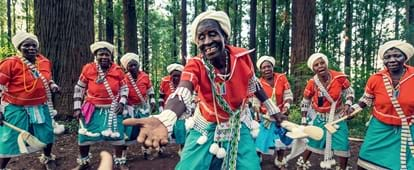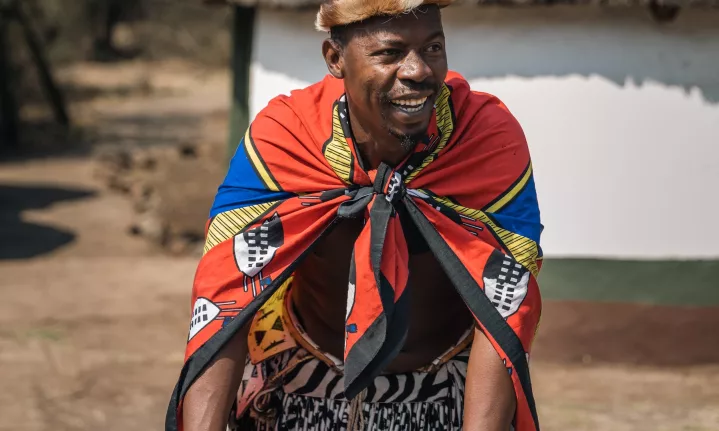Rumored Buzz on South African Culture Today
Rumored Buzz on South African Culture Today
Blog Article
The 7-Minute Rule for South African Culture Today
Table of ContentsFacts About South African Culture Today UncoveredThe Ultimate Guide To South African Culture TodayThe Best Guide To South African Culture TodayThe Buzz on South African Culture TodaySouth African Culture Today - An OverviewAn Unbiased View of South African Culture Today
A matter of value in Zambian towns is the passing away of enjoyed ones. All participants of the town placed money, time and effort together for the burial of the deceased.During the grieving duration; guys remain outside the residence and the females remain inside the house of the deceased. After discussing the dead, the village walks to the area of funeral to state their last farewells. Songs and dancing is a very important element of the Zambian society. The numerous tribal units have their own dance forms; nonetheless, makishi is typical among all people.
Unknown Facts About South African Culture Today
When it comes to music, drums are made use of the most, with a selection of drumming ceremonies. In Zambia, majority of the individuals are Christian; Protestant and Roman Catholic. There are small teams of Muslims and Hindus, with the rest following neighborhood native tribal beliefs.

South African heritage and culture is immensely diverse, and consists of several groups of people that each have their very own practices and ideas. Having such a variety of individuals and societies is what makes South Africa so special. In the real feeling of the expression, we are a rainbow nation.
South Africa has around 3 hundred thousand Portuguese people residing in it. Making it the 7th on the listing of countries with the most Portuguese individuals in it beyond Portugal. Portuguese is not just a culture, but it is also a language and a nationality. Portuguese individuals stem from the country of Portugal in Europe, nevertheless, due to Portugal (like many various other nations in Europe) checking out the world and conquering various other nations during the 15th 20th centuries, South Africa has what we call Portuguese South African's living in it.
Indicators on South African Culture Today You Need To Know
Amongst the popular attributes of the topography is a plateau that covers practically 2 thirds of the center of the nation. The plateau complex increases towards the southeast, where it climaxes in the Drakensberg variety, component of an escarpment that divides the plateau from the seaside areas. The Drakensburg consists of Sparkling wine Castle, the highest height in the nation.
The region north of the Witwatersrand, called the bushveld, inclines downward from eastern to west toward the Limpopo River, which creates the international boundary. The western section of the plateau, the middleveld, additionally descends towards the west and differs in altitude between the highveld and bushveld. Between the Drakensburg and the eastern and southerly coast, the land comes down to the sea.
Nearer the shore there is a low-lying plain called the eastern lowveld. Southwest of the plateau the country comes to be progressively much more dry, giving way to the stony desert of the Great Karroo, approached the eastern by the lower, better watered plateau of the Little Karroo. Dividing the completely dry southerly inside from the sandy littoral of the southern coastline and West Cape is one more array, the Langeberg.
The Of South African Culture Today
The nation's racially, ethnically, and politically separated history has generated national and subnational symbols that still operate as icons of the country, and others signs that are accepted only by particular groups. The monuments to white inhabitant occupation and political supremacy, such as the Afrikaner Voortrekker ("pioneer") Monument in Pretoria and the Rhodes Monolith recognizing the British colonial empire home builder and Cape head of state Cecil Rhodes, stay sectarian symbols.
The first contemporary residents were the San ("bushman") hunter-gatherers and the Khoi ("Hottentot") peoples, that rounded up livestock (South African culture today). The San may have existed for hundreds of years and left evidence of their presence in hundreds of old cave paints ("rock art"). Bantu-speaking clans that were the forefathers of the Nguni (today's amaZulu, amaXhosa, amaSwazi, and vaTsonga peoples) and Tswana-Sotho language teams (today's Batswana and Southern and Northern Basotho) moved down from eastern Africa as early as the fifteenth century

The two previous over at this website republics of the Orange Free State and Transvaal (South African Republic) were developed by Afrikaner settlers who beat and dispossessed the Basotho and Batswana. Lesotho would certainly have been forcibly integrated right into the Orange Free State without the expansion of British security in 1869. The utmost unification of the nation resulted from the South African Battle (18991902) between the British and both Afrikaner republics, which reduced the country to ruin at the beginning of the twentieth century.
Afrikaners traditionally considered themselves the only real South Africans and, while providing full citizenship to all locals of European descent, refuted that standing to people of color up until the autonomous change of 1994. British South Africans retain a sense of cultural and social connection to Great Britain without deteriorating their identification as South Africans.
7 Easy Facts About South African Culture Today Described
The diversity and fragmentation within ethnic groupings and the balance of stress in between those teams during the twentieth century avoided interethnic civil dispute. While intergroup tensions over sources, privileges, and political dominance continue to be, those problems are as likely to pit Zulu versus Zulu as Zulu versus Xhosa or African against Afrikaner.
From colonial India, British merchants and managers brought the my website bent metal ornamental roofs and slim shoelace work columns that still typify the outdoor patios of homes in the check it out areas and cities throughout the nation. Residences of praise contribute a vital building element also in the tiniest towns. Along with the skyrocketing steeples and classic stonework of Afrikaans Dutch Reformed churches, Anglican churches, synagogues, mosques, and Hindu temples supply range to the spiritual building scene.

Butchering and the brewing of standard grain beer are important in safeguarding the participation and goodwill of the forefathers that are taken into consideration the guardians of good luck, success, and health. Indian communities preserve their indigenous cooking practices and apply them on Islamic and Hindu ritual and ceremonial events. Afrikaners and Coloured individuals collect at weekend breaks and special occasions at multifamily barbeques called braais, where neighborhood bonds are reinforced.
Because this was the main economic business of both black Africans and white homesteaders, problem in between those groups centered on the property of grazing land and livestock. In 1867, the biggest ruby down payments in the globe were uncovered at Kimberley in the west main location. The wide range from those areas aided fund the exploitation of the best gold coral reef on the planet, which was uncovered on the Witwatersrand in 1886.
The 25-Second Trick For South African Culture Today
This resulted in misunderstandings and calculated misstatement in the negotiations of white settlers and federal government authorities with African chiefs during the early american period (South African culture today). In the establishment of African gets, some elements of communal and primarily "tribal trust fund" land tenure were preserved, and also in white backwoods, forms of common tenure were still practiced in locations with African areas
After the democratic transformation of 1994, programs for land restitution, redistribution, and reform were instituted, however development has actually been slow. The white minority still regulates eighty percent of the land. In the wake of farming land invasions in Zimbabwe, the Division of Land Affairs has actually promised to speed land redistribution.
Report this page